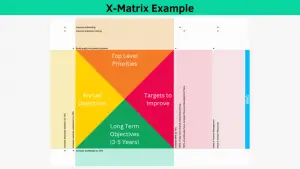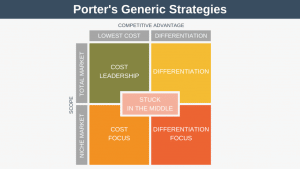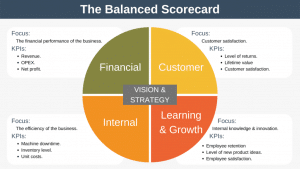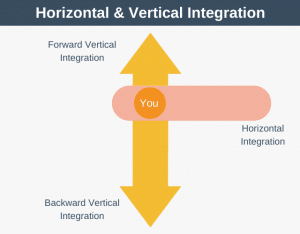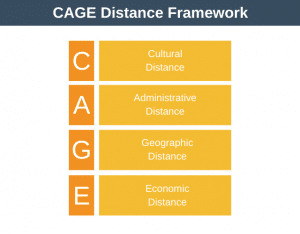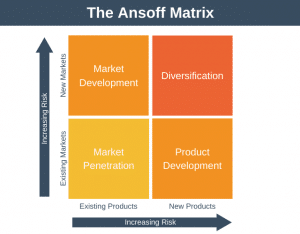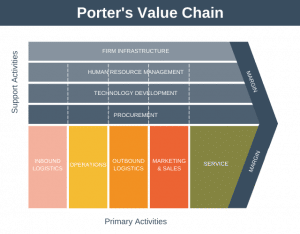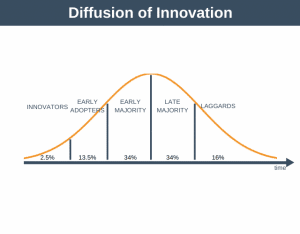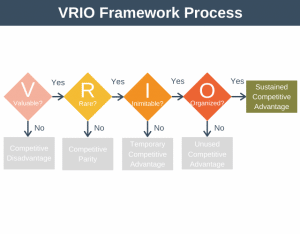Mintzberg’s 5 Ps of Strategy is a model to which can help you develop your strategy by examining it from five different perspectives.
Most people and companies take a very simplistic approach to strategy development. Perhaps they brainstorm their way through a SWOT analysis and then from this try to plot their way to world domination.
Unfortunately, this very simplistic approach is one which is unlikely to give great results. To get your strategy right you’ll need to invest a lot of time to thinking about it and developing it.
Further Reading
Many people believe that strategy is about competing to be the best. It isn’t. It’s about competing to be unique.
If you’d like to learn the basics of strategy then start by reading our article, What is Strategy?
Another strategic model to investigate that can help you develop your strategy from different perspectives is The Strategy Diamond, by Michael Porter.
Mintzberg’s 5 Ps of Strategy
Henry Mintzberg of McGill University developed The 5 Ps of Strategy model in 1987.
Mintzberg recognized that strategy is difficult to get right. It takes deep thought and lots of time. And even if you do get it right, your strategy could be rendered obsolete overnight by a competitor.
To help develop a better strategy, Mintzberg developed The 5 Ps of Strategy. The 5 Ps are five different perspectives we can adapt to develop our strategy.
Each ‘P’ throws light on what strategy means from a different perspective. The idea is that by defining our strategy from five perspectives we get a more robust strategy than if we’d just used a couple of sentences to define it.
The five perspectives are:
- A strategy has a PLAN
- A strategy has a PLOY
- A strategy has a PATTERN
- A strategy has a POSITION
- A strategy has a PERSPECTIVE
Let’s examine each of the 5 Ps of Strategy in turn…

1. Plan
A good strategy must have a plan. A course of action you intend to take or a series of guidelines you intend to follow.
The purpose of the plan is to get you from where you are now to where you want to be.
Planning is usually what comes to mind immediately when people think of strategy development. Tools to support planning include:
- Firstly, PEST analysis, SWOT analysis, and brainstorming to help you identify opportunities.
- Secondly, change management and project management techniques to help you plan to reach the opportunities you decide to follow.
All plans have two characteristics: they are developed purposely and in advance.
Planning is an essential part of strategy development, but it isn’t enough on its own to ensure you have a great strategy. That is why we need the four other Ps.
2. Ploy
You can think of a ploy as being something to get the better of a competitor.
In business, there is no way to avoid competitors. Ploys are specific tactics to try and outsmart or disrupt what your competitors are doing.
Examples of ploys include:
- Dropping prices to deter competitors.
- Filing for patents.
- Threatening legal action.
- Investing in areas of excellence, for example, customer support.
Tools to help you develop ploys include scenario planning, game theory, and the futures wheel.
Ploys tend to be short-term tactics, and a strategic ploy or two can be a good thing. But, it is important not to focus on your competitors so much that you lose sight of your own long-term strategic plan.
3. Pattern
Defining our strategy as a plan and some ploys isn’t enough. We also need to look at our behaviors. This makes sense because the output from strategy doesn’t come from the plan or ploy. It comes from the actions we take every day.
Strategy as a pattern is about looking at what kind of behavior patterns have worked for you in the past. It is then about deciding which of these patterns you want to continue or enhance.
You can think of the plan as being the intended strategy, and the pattern as being the realized strategy.
An example of a simple pattern: imagine if every decision throughout your organization was being made with your customer in mind. This behavior will have already resulted in great products in the marketplace. As such, it is probably a behavior you want to keep and even articulate in your strategy.
The Core Competencies model can be helpful in finding patterns.
4. Position
Position is another way to define your strategy. Position tells you where you sit on the playing field relative to your competitors.
Example positions include:
- Being the cheapest.
- Having the most features.
- Servicing a particular customer niche.
- Having world-beating customer service.
Position answers the question, “How are we going to carve out a piece of the market for ourselves?”. There will be pros and cons to each answer. Part of strategy development is to work through these pros and cons and make some deliberate decisions.
Strategic tools that look outward to the marketplace can be useful in developing your position. These include PEST analysis, Value Chain analysis, and Porter’s Diamond Model.
Note
From a Game Theory perspective, we can consider a ploy to be a two-person game. In a two-person game, we are competing head-to-head against each other.
Position allows us to broaden the game to an n-person game. In an n-person game, we compete against lots of other entities. These entities are not restricted to just companies. They could also be governmental or environmental, for example.
5. Perspective
While position looks out to the world, perspective looks internally. Perspective looks at shaping the personality and culture of the organization.
Your perspective will be set from how you view the marketplace and what you perceive it wants. For example, an accountancy firm’s view of the world will be vastly different from a Silicon Valley high-tech startup.
Suppose you feel that your marketplace is relatively stable and wants the highest-quality product. In this scenario, you’ll build your culture around high-quality execution and cost control.
Conversely, in a new market speed of new product development might be the most important factor. In this case, you will build your culture around rapid-development and failing forward.
In order for perspective to be useful, it must be shared by all members of an organization. It must also be lived by the actions that everyone in the organization takes every day. Thus, a large part of senior management’s job will be trying to make everyone share the same perspective. This is usually through sharing the vision and values of the organization, along with the roadmap to realize that vision.
The Core Competencies Model and Trompenaars Cultural Dimensions can be useful in helping you to determine your perspective.
At a Glance
We can summarize Mintzberg’s 5 Ps of Strategy as follows:
- Plan: The plan by which the organization hopes to achieve its aims.
- Ploy: A specific tactic to outwit a competitor.
- Pattern: Highlights that strategy isn’t an event. It is a constant series of decisions and actions moving the organization towards its aims.
- Position: The position of each product in the marketplace relative to competitors.
- Perspective: The organization’s culture and personality. It’s way of getting things done.
5 Ps of Strategy Example
As an example of Mintzberg’s 5 Ps of Strategy in action let’s examine the 5 Ps for Apple.
Of course, only Apple knows their own true strategy, so we use this example as a means to show the 5 Ps in action.
- Plan: To continue to consistently build the easiest to use and most intuitive consumer electronics. Continue to expand the app ecosystem.
- Ploy: Apple is frequently ahead of competitors in terms of innovation. Thus, as a ploy, it is able to threaten to sue or sue, any competitors that copy their technology.
- Pattern: Apple responds to the challenge of competition through innovation. Some of these innovations are complete failures but others are runaway successes.
- Position: Apple products are positioned at the high-end. Their high-quality intuitive design covering both hardware and software is difficult to compete against.
- Perspective: One of Apple’s values is “think different”. Its culture and personality are all about making the best products in the marketplace and doing it in an innovative way.
Using The 5 Ps of Strategy
Mintzberg’s 5 Ps of Strategy isn’t a process you follow when trying to put your strategy together. Rather, its five different viewpoints you should think about when developing your strategy.
If you’ve planned your strategy from all five viewpoints then the chances are that your strategy will be strong and robust.
A typical process to develop a strategy looks something like this:
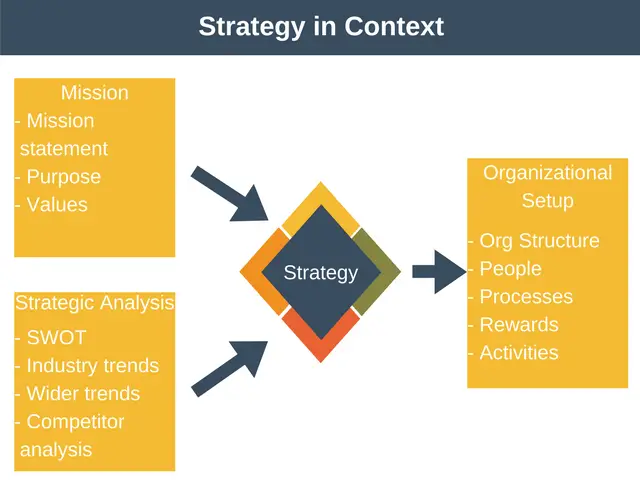
The most common ways to use 5 Ps of Strategy model are:
- When you’re initially collecting inputs to begin the process of creating your strategy. Here, the 5 P’s can help ensure you’ve collected all the information you need by examining it from different perspectives.
- When you’re analyzing a strategic idea the 5 Ps can help you examine each idea from different perspectives.
- Once your strategy is developed the 5 Ps can help ensure you’ve covered all the angles.
- Finally, it can be used help to ensure that all 5 Ps are covered in any plans that derive from your developed strategy.
Summary
Mintzberg’s 5 Ps of Strategy is a model which helps you look at your strategy from five different points of view. It isn’t a process as such, but rather five viewpoints to consider.
Take the time to consider all five viewpoints as you develop your strategy. If you do, then the chances are that you will develop a complete and robust strategy.
